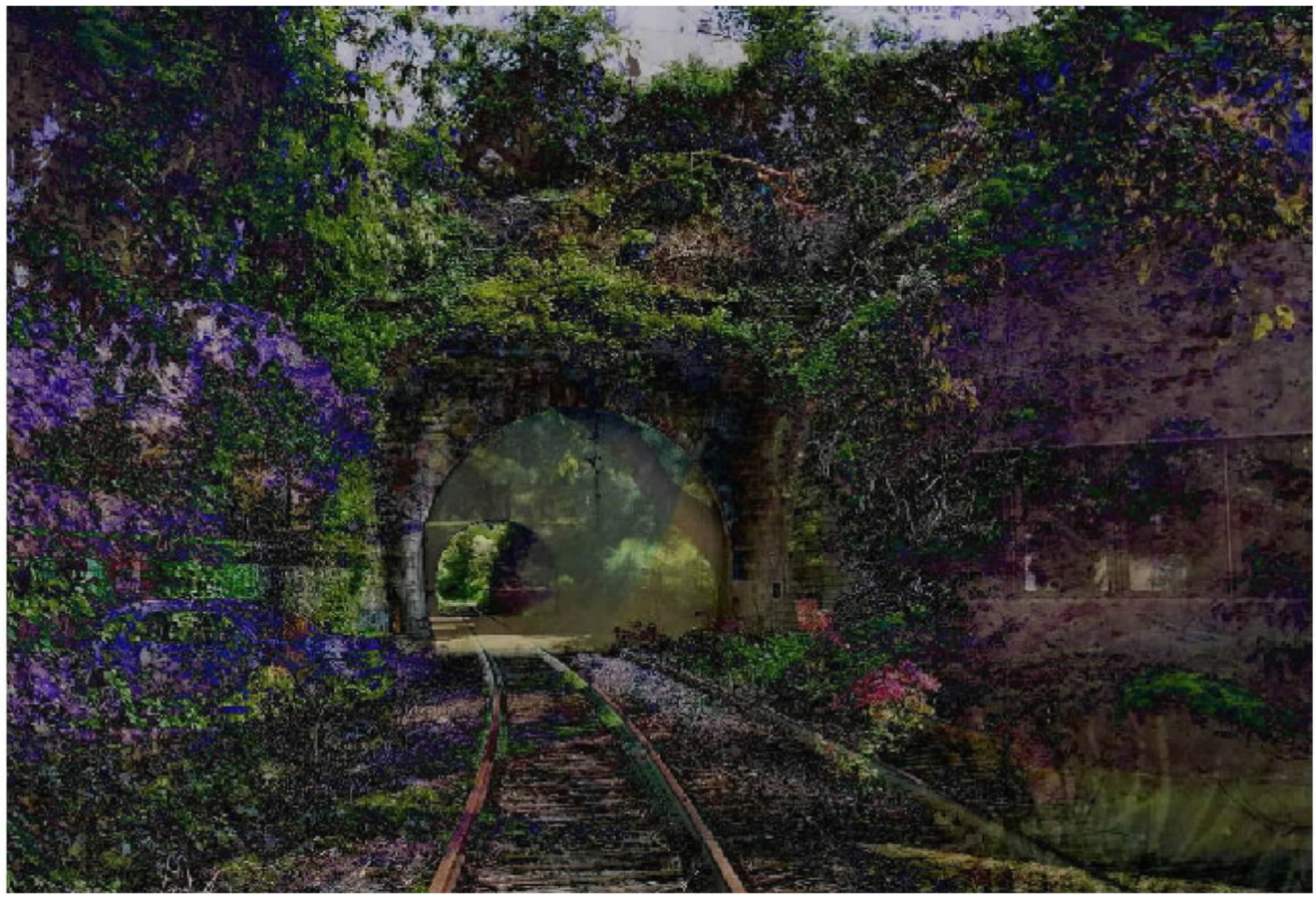In an August 18, 2023 decision, a judge ruled that works generated by artificial intelligence (AI)[1] are not copyrightable. This may have significant ramifications for protecting works created, in whole or in part, by AIs.
Stephen Thaler owns a computer system called the “Creativity Machine,” which Thaler alleges generates pieces of visual work of its own accord.[2] He sought to register a copyright for once such piece titled “A Recent Entrance to Paradise” which is shown below.[3]
Thaler’s application listed the Creativity Machine as the author, and requested that the copyright transfer to him as the owner of the Creativity Machine.[4] The Copyright Office denied the application on the ground that the work lacked human authorship which, in the view of the Register of Copyrights, is a prerequisite to obtaining a copyright. [5] Thaler challenged the Copyright Office’s decision pursuant to the Administrative Procedures Act by filing suit in the U.S. District Court for the District of Columbia.[6] Both parties eventually moved for summary judgment on the sole issue of “whether a work generated entirely by an artificial system absent human involvement should be eligible for copyright,” and the Court held that the work was not copyrightable.[7]
The Court began its analysis by acknowledging that copyright protection is a naturally arising property of works meeting certain requirements, and a certificate of registration—while conferring certain benefits from an enforcement perspective—“simply confirms that the copyright has existed all along.”[8] Accordingly, the key analysis was whether, fundamentally, an AI generated work met the requirements necessary for copyright to naturally subsist in the work.
While the Court acknowledged a long line of precedent noting that copyright law is malleable enough to “cover works created with or involving technologies developed long after traditional media of writing memorialized to paper,”[9] it nevertheless noted that such extensions of copyright law still required human involvement.[10] Accordingly, the Court found that “Copyright has never stretched so far, however, as to protect works generated by new forms of technology operating absent any guiding human hand . . . [because] [h]uman authorship is a bedrock requirement of copyright.”[11] In support of its conclusion, the Court pointed to cases finding other works uncopyrightable due to the lack of human authorship.[12] Because the work allegedly created by the “Creativity Machine” lacked sufficient human guidance (Thaler explicitly stated the work was created autonomously), it lacked a human author and was therefore uncopyrightable.[13]
While this case was straightforward in that Thaler expressly stated there was an absence of human involvement in the creation of the work, it raises questions about works created by a blend of human and AI effort. While at least one Copyright Office decision has found the AI generated portions of such a work uncopyrightable,[14] the law is still developing and the question of copyrightability may be fact specific based on the amount of human guidance that was involved in the creation of the work and how intertwined the AI and human efforts are. If your client’s business involves AI content generation, please reach out to a member of our IP team.
Alex Weidner, Michael Parks, and Matt Braunel are members of Thompson Coburn’s Intellectual Property group.
[1] The term AI refers to software that is designed to algorithmically simulate human reasoning or inference, often using statistical models.
[2] Thaler v. Perlmutter, No. CV 22-1564 (BAH), 2023 WL 5333236, at *1 (D.D.C. Aug. 18, 2023). Note that Thaler was also individual involved in Thaler v. Vidal, 43 F.4th 1207 (Fed. Cir. 2022), cert. denied, 143 S. Ct. 1783, 215 L. Ed. 2d 671 (2023), in which the Federal Circuit concluded that inventors listed on patent applications must be natural persons.
[3] Id.
[4] Id.
[5] Id.
[6] Id.; see also 5 U.S.C. § 704.
[7] Id.
[8] Id. at 2 (citing Fourth Est. Pub. Benefit Corp. v. Wall-Street.com, LLC, 139 S. Ct. 881, 887 (2019).
[9] Id. at 3 (citing Goldstein v. California, 412 U.S. 546, 561 (1973) (power to protect the “Writings of Authors” is not limited to script or printed material); Burrow-Giles Lithographic Co. v. Sarony, 111 U.S. 53, 58 (1884) (upholding the constitutionality of an amendment to the Copyright Act to cover photographs).
[10] See id. (quoting Burrow-Giles statement that “[a] camera may generate only a “mechanical reproduction” of a scene, but does so only after the photographer develops a “mental conception” of the photograph, which is given its final form by that photographer's decisions like “posing the [subject] in front of the camera, selecting and arranging the costume, draperies, and other various accessories in said photograph, arranging the subject so as to present graceful outlines, arranging and disposing the light and shade, suggesting and evoking the desired expression, and from such disposition, arrangement, or representation” crafting the overall image.”).
[11] Id. at 4.
[12] See id. at *5 (citing Kelley v. Chicago Park Dist., 635 F.3d 290 (7th Cir. 2011) (cultivated garden not copyrightable because the garden owed its form to the forces of nature); Naruto v. Slater, 888 F.3d 418 (9th Cir. 2018) (photograph taken by Monkey after camera was left unattended was not copyrightable)).
[13] Id. at *6-7.
[14] See Letter from U.S. Copyright Office re Zarya of the Dawn, available at https://www.copyright.gov/docs/zarya-of-the-dawn.pdf (cancelling and reissuing registration to disclaim AI generated images while preserving copyright for the text and the selection, coordination, and arrangement of the work’s written and visual elements).







